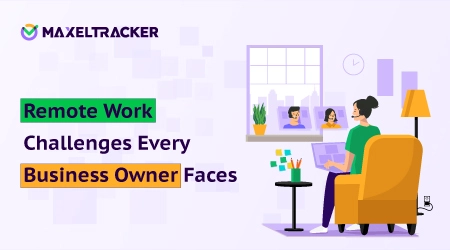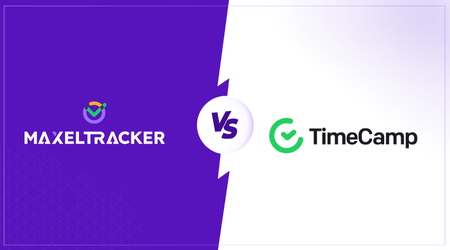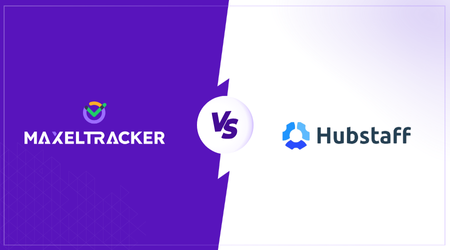

Employee productivity is the backbone of any successful organization. When employees are efficient and engaged, businesses can achieve more without increasing their workforce. However, maintaining high productivity isn’t just about working longer hours—it’s about optimizing workflows, reducing inefficiencies, and creating an environment where employees can perform at their best.
Many businesses focus on improving individual performance, but true productivity comes from a combination of motivation, the right tools, and a well-structured work environment. By implementing the right strategies, you can empower your team to work smarter, stay focused, and contribute to overall business growth.
In this blog, we’ll explore effective ways to boost employee productivity, helping your organization achieve better results while maintaining a positive and balanced workplace culture.
Employee productivity refers to the amount of work an individual completes within a set timeframe. However, the way productivity is measured can vary depending on the organization, department, and specific job roles. For instance, a sales team's objectives will differ from those of a customer service team.
Workplace productivity should be measured by its impact on business outcomes. Being busy does not equate to being productive. Employees should aim to solve problems efficiently without compromising the quality of their work or their compensation. Those who master their roles and find solutions quickly save your company time, money, and unnecessary stress.
To foster growth, it’s essential to recognize and appreciate these experienced contributors. By supporting and retaining top talent, your company can achieve sustainable productivity and long-term success.
Improving employee productivity isn’t about offering big raises or expensive perks—it’s about creating an environment where employees feel motivated and engaged. Instead, practical and impactful strategies can drive greater results from your team. The foundation lies in fostering employee engagement.
Disengaged employees can drain company resources, while engaged employees are more present, stay with the organization longer, and consistently perform at higher levels. By focusing on engagement, you can create a motivated and productive workforce that contributes significantly to your organization’s success.
A Gallup poll revealed that only 34% of the U.S. workforce feels engaged in their work. This lack of engagement comes at a steep cost, as companies that overlook poor employee productivity and an unhealthy work culture can face significant consequences. The impact extends beyond individual organizations—actively disengaged employees result in a loss of $483 to $605 billion annually in productivity across the U.S. To help address this, we’ve outlined effective methods for improving employee performance and productivity.
One of the most effective strategies for boosting employee productivity is offering opportunities for continued learning. A study by the National Center for Education Statistics found a clear link between access to education and improved employee performance. This can range from providing internal cross-training and professional development programs to offering tuition assistance for employees seeking advanced degrees, such as a Master in Business Administration. By investing in your team’s growth, you’re fostering a more knowledgeable, motivated, and productive workforce.
The foundation of high employee productivity often lies in a company’s culture, which shapes everything from the work environment to shared values and goals. Research has shown that productivity thrives in workplaces where collaboration and relationship-building are valued, while environments focused on rigid hierarchies and individual achievements can stifle performance.
To drive productivity, it's crucial to align your hiring practices with a focus on teamwork and mutual support. Bringing in employees who can seamlessly integrate and collaborate creates a culture that motivates and energizes your team. A positive, inclusive company culture boosts productivity and fosters greater employee satisfaction and long-term success.
Does your team really need to work from 9 to 5 to stay productive? Many employees have different peak productivity hours—some thrive late at night, while others are most focused in the early morning.
As Sarah Johnson, a Senior Manager at TechCorp, points out, "Allowing employees to set their own schedules has made a huge difference in productivity. When people have the flexibility to work during their most productive hours, they complete tasks more efficiently and with higher quality."
Allowing flexibility in work hours can create a better work environment and improve overall productivity. However, it's important to set clear guidelines for this flexibility, such as:
We have meetings at specific times every week or month. All employees are expected to attend.
Our goal is to respect our customers, so communication with them must occur during designated hours.
Respect the unique work styles of all employees. If you're working outside regular hours, don’t expect an immediate response. Schedule messages for standard business hours unless prior permission has been given.
Work location is another important consideration. Do employees really need an office to be productive? Are you spending money on office space when employees would benefit from more flexibility?
James Taylor, CEO of InnovateX, shares, "We implemented remote work policies and saw a significant reduction in overhead costs. Our team is happier, and they can manage their time better, which leads to improved performance and job satisfaction."
When employees take longer than necessary to complete tasks or provide services, it impacts the entire team. Whether it's a colleague having to pick up the slack or a frustrated customer leaving a negative review, inefficiency can harm your bottom line. Addressing productivity issues quickly is essential for improving profitability. Companies with engaged and productive employees not only enjoy better retention and higher customer satisfaction but are also 21% more profitable.
When employees feel they can make a meaningful contribution to an organization, they gain a sense of purpose. Boosting productivity helps employees see the impact of their work, generating motivation. Sometimes, just allowing team members to make daily progress on important tasks can be a greater motivator than any incentive.
Employees who are highly productive tend to be more engaged with their work. As productivity improves, it becomes clearer who is truly dedicated to achieving business objectives and making meaningful contributions to the organization. Engagement is often tied to strong leadership, as well as the level of autonomy an employee feels and how much control they have over their workload. Recognizing these individuals helps you identify your most valuable team members.
When was the last time you checked in with your team to discuss their projects or well-being? Although 1:1 meetings might seem like just another meeting on your calendar, they are crucial for maintaining progress and addressing potential roadblocks.
Regular 1:1s with your team members help you spot issues such as burnout, lack of motivation, or confusion about goals. By engaging in these conversations, you can uncover what’s on your team’s mind and develop a plan to help them get back on track.
To get the most out of these meetings, aim for weekly check-ins with your direct reports. If that’s not possible, try combining 1:1s with asynchronous communication, like a Loom video. Don’t feel pressured to make these meetings long—sometimes a quick 10-minute conversation can provide valuable insight, especially when your team needs support.
Keeping an eye on employee morale and engagement is crucial for maintaining productivity. Are your employees excited to come to work, or are they quietly seeking new opportunities? When morale is high, employees are motivated to do great work, but low morale can lead to disengagement and a drop in productivity, often affecting the entire team.
One of the most effective ways to gauge employee engagement is through regular surveys. A popular tool is Gallup’s Q12, which includes quick, insightful questions about employee experience. After completing the survey, you’ll have a clear understanding of areas like work relationships, career development, and expectations.
Surveys give you a real-time pulse on what’s happening within the company, helping you address potential issues before they escalate. Don’t wait for problems to grow—taking proactive steps will allow you to resolve concerns before they affect your team's productivity.
Are tasks being overlooked or delayed? Delegation is a powerful key to boosting employee productivity, but it doesn’t always work smoothly. Successful organizations implement a clear task delegation process.
One simple yet effective approach is to never assume a task has been fully delegated until you’ve received confirmation from the person responsible for completing it. By establishing this practice, you can avoid missed deadlines, incomplete work, and unnecessary stress. Clear communication and follow-ups are key to making delegation efficient and ensuring tasks are completed on time.
Several key factors, including company culture, work environment, training, and technology, significantly impact employee productivity, which ultimately influences business outcomes.
Around 86% of business leaders believe that a strong company culture enhances productivity, and they’re right. Research shows that positive work environments, where employees feel valued and appreciated, foster higher engagement and morale. On the flip side, toxic or competitive cultures often lead to increased healthcare costs, disengagement, and lower employee loyalty, all of which can be costly in the long run.
Whether employees are in the office or working remotely, the physical environment plays a crucial role in productivity. Factors such as temperature, lighting, and even hydration can affect focus and performance. How is your company helping employees create a productive and comfortable environment, both at home and in the office?
A diverse team brings a wide range of perspectives and skill sets, which can greatly benefit your organization. Does your workplace actively promote diversity and inclusion, ensuring that employees from various backgrounds contribute to the company’s success?
A significant 64% of organizations report that the skill gap is hindering their growth. Are your employees receiving a comprehensive onboarding experience? Do they have the training and resources to perform their jobs effectively, or do they need further development to stay ahead in an ever-evolving work environment?
Employees who are physically and mentally well tend to perform better than those who are struggling with health challenges. While employees experiencing illness or injury may still show up to work, they often can’t perform at their full potential—a phenomenon called “presenteeism.” How is your company prioritizing the health and well-being of your employees to ensure they can perform at their best?
Having the right tools and technology is essential for boosting productivity. Are your employees equipped with the proper resources to complete their tasks efficiently? Have they been trained to make the most out of these tools?
Maintaining productivity can be challenging. As we’ve discussed, expecting 100% productivity from every team member is unrealistic. Employees need time to connect with their colleagues and take necessary breaks throughout the day. The strategies outlined in this article are designed to help employers create a more productive workplace as they grow their businesses. By implementing one or more of these approaches, you’ll likely notice a significant boost in workplace productivity over time.
👉 Sign up now at MaxelTracker.com and start transforming your team’s productivity today! 🚀
👉 Explore our pricing plans and features to find the perfect solution for your team’s productivity needs! 🚀
Related Blogs

15 Remote Work Challenges Every Business Owner Faces — And How to Solve Them
Remote work rings a familiar bell, and it offers flexibility and global reach as well. But for CEOs, HR heads, and other important position holders across countries like USA, UK, Canada, or UAE, it is often the bringer of stress.

Timecamp Alternatives & Competitors
MaxelTracker is an all-in-one workforce management platform that goes beyond project and task tracking. Monitor real-time activity, track attendance, and gain actionable productivity insights, all in one place.

Hubstaff Alternatives & Competitors
Your time tracking software serves as the control center for your team’s productivity. If it's lacking key features, like GPS tracking for mobile teams or other essential tools, it becomes difficult to manage performance effectively.